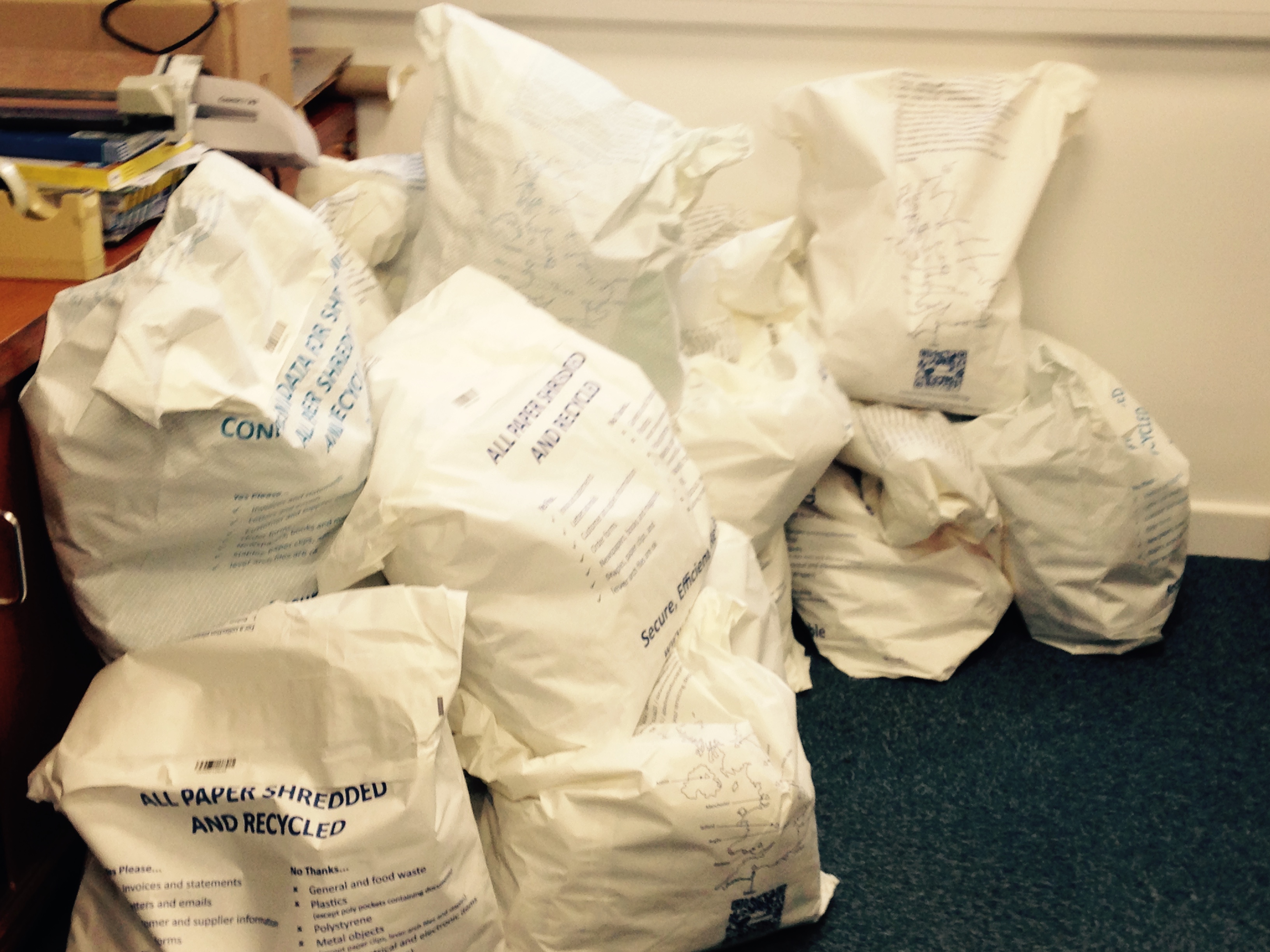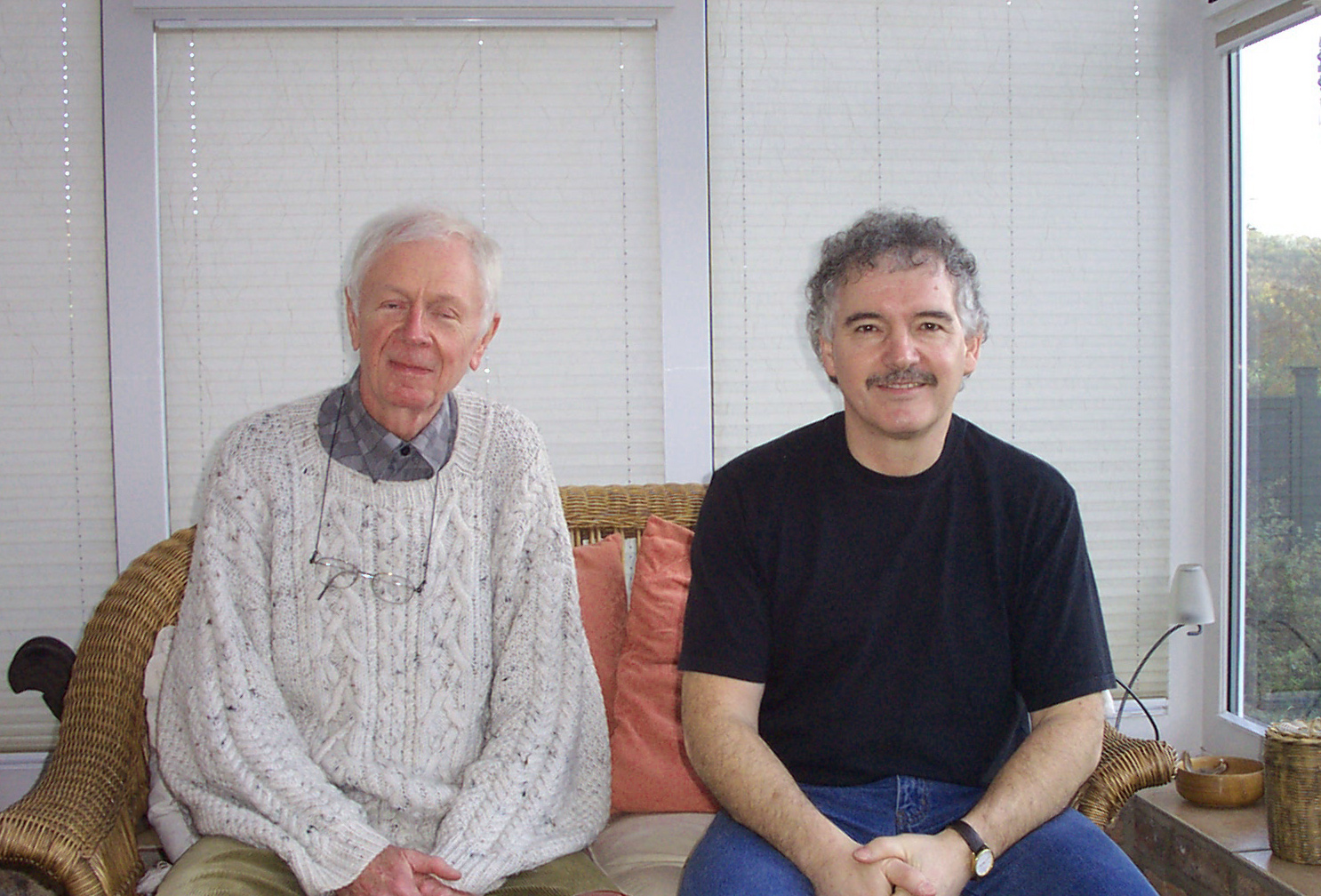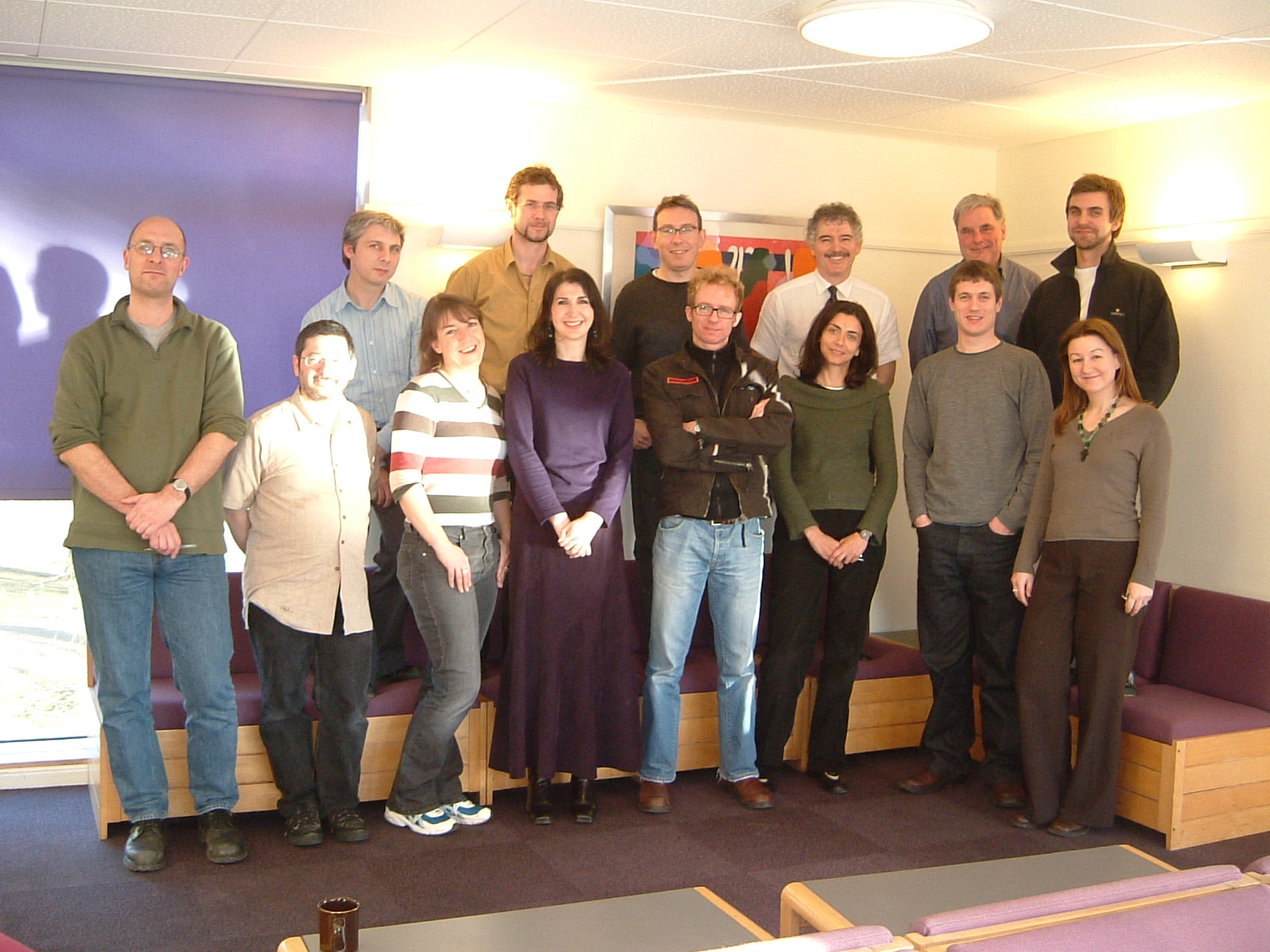When I was asked to write a short piece on the history of SATSU, I wondered how 30 years of activity since 1988 could be summarised. By pure coincidence, I had begun to go through and clear out 30 years of paperwork, generating 30 bags of confidential and other waste – one for each year. I took a picture of the bags, as you can see, but guess they don’t speak for themselves, so I should pen a few words here to tell you what is (now, I hope, was) inside them, without of course breaking any confidences!

I established the Unit at what is now Anglia Ruskin University, based in Cambridge, but then known as CCAT. From its early days the Unit was interested in developing research that could bridge between STS and science policy. I had already good links with a few other UK centres, notably the Institute for Science, Technology and Innovation Studies at the University of Edinburgh (ISSTI) and the Science Policy Research Unit in Sussex (SPRU) (both celebrating their 50th anniversary last year) who were pursuing similar aims, and our work had a strong focus on understanding the relation between socio-economic innovation systems, policy contexts, and the promise of new technology. Studies on the privatisation of public science, on foresight (the FORMAKIN and FOREN projects), patenting and intellectual property within universities and knowledge sourcing across different public and private organisations, cycling cultures and various consultancies (such as one for Kodak who wanted to know if there was a future for digital cameras!) marked much of the work in our first ten years. The Unit collaborated closely too with the then Science Policy Support Group that Peter Healey and John Ziman established (and which also acted as the secretariat for EASST for a number of years). Peter, myself and Henry Etzkowitz set up an ‘Academic-Industry-Relations’ network, and it was that which led to the first ideas around the so-called ‘Triple Helix’, which Etzkowitz has since turned into a major international programme.
By 1998, we had grown in number and established a strong portfolio in both UK and EU-funded studies such that we decided to have a formal ‘public launch’ inviting both academic and policy contacts to see our work as a whole. We were delighted that Arie Rip came as our guest speaker, someone who works across the STS/policy divide with consummate skill.
The links to Europe, partly through EASST, meant we had a presence at important European Commission (then called ‘European Economic Community’) policy meetings: very different days, for then it was EEC officials, such as Riccardo Petrella, who took the initiative to foster STS research and training in its work programmes, and through which, for example,the postgraduate European Studies of Society, Science and Technology (ESST) was established. I was also involved in UK-based early policy debate in Westminster on genetics and biotechnology which led to our securing a number of consultancies from government to advise them on such issues, a focus which was to define much of our work in the next decade, after our move to York in 1999, where the Unit is still based. Of course, when going through the material from our time at Anglia, much of that was in the form of written letters (in ink!), the use of DOS to construct code for sending early versions of what was called ‘electronic mail’, Faxes by the score, and reams of paper-based data sets from fieldwork, hand-coded in pre-NVivo days. So the York move was at the threshold of a rapid expansion in academia of digital communication – yet there seems to have been just as much paper put on file!

The move to York in part reflected ongoing links I had with the then colleagues here, such as Steve Yearley (now in Edinburgh), and Mike Mulkay (who had been my PhD supervisor, now retired). It also reflected the emerging impact of the UK’s national research evaluation exercise, and SATSU was recruited to help bolster the STS work being done in York. The move was not easy – transferring people and grants brings lots of professional, financial and personal/family challenges, such that sadly not all our members could move, though most did. Within a few months, the Unit hosted a major 5-year joint Economic and Social Research Council and Medical Research Council funded research programme on ‘Innovative Health Technologies’, involving 130 researchers across 32 projects, all of which is still available on the York website, and worth a visit. Paralleling this, we became a Marie Curie training site between 2001-5 which meant meeting, supervising and becoming long-standing friends and colleagues with a magnificent group of young European scholars most of whom are members of what became the Bio-objects network, funded via an EU Cooperation in Science and Technology Action: they too have gone on to secure their own careers making a major contribution to STS in their own countries and internationally. Work on bio-objects (which to members’ collective delight received the Amsterdamska award from EASST in 2012) continues and is used today way beyond the original network – a very mobile concept which will figure in the 2018 EASST Conference.

Over the next decade and more, three research themes framed our research: the sociology of the biosciences, social informatics, and the governance and regulation of new technologies. For example, within the area of health our work examined the influences shaping the clinical, regulatory and commercial development of the new biosciences, especially in the area of regenerative medicine/stem cells, cord blood banking, xenotransplantation, Antimicrobial Resistance (AMR) , the new genetics and pharmacogenetics, and developed our interest in e-health (such as telemedicine) and its implementation in clinical and non-clinical settings. Our work on stem cells – focused on the construction and performativity of standards – led to major funding from the EC – the REMEDiE project – and from the ESRC, the much more recent REGenableMED project (see a complete set of results at https://www.eurostemcell.org/regenerative-medicine-special-report). The Unit also hosted another ESRC programme on Stem Cells, which helped to build momentum in this under-researched area. I think it was the Unit’s engagement across the social science/science boundaries that in 2007 led the ESRC to commission us to prepare – through many meetings at national and regional level over 18 months – its new Research Ethics Framework – which is now what underpins its ethical guidelines for all UK social science research.
This compendium of work sought to answer key questions such as how do biomedical technologies and the play of expert/lay boundaries shape the meaning of health, ‘life’ itself and healthcare practices, within a wider context shaped by the growing regulation, marketisation and informaticisation of health. The Unit’s wider work on social media has examined digital technologies and systems working with real-time, by-product data, mapping the use and meaning of such data, and developing insight into socio-technical cultures that are emerging today around informational systems, metrics and data infrastructures. This has fostered a strong interdisciplinary programme with colleagues in computer science within the Digital Creativity Hub. The digital also is the main focus of a more recent ‘Navigating Knowledge Landscapes’ network that spawned out of the former bio-objects group, and which explores how individuals and groups engage with and make sense of health information on the web. This now has 72 members across 24 countries. In 2009 we celebrated our ‘21st birthday’ with a series of invited public lectures from senior STS colleagues available as webcasts on the SATSU site.

In the past few years, we have also begun to build a sustained programme of work in the (recent) history of science, with work on the meaning of evidence in primatology and on how late 19th to late 20th century science has been a source of ‘unsettling’ social change, opening up new possibilities, anticipations and hopes, at the same time as inspiring new conflicts, and fears with unintended consequences. The project explores this through various literatures, including popular science periodicals and science fiction.
This more temporal aspect of the Unit’s work is not only embodied in the sociology of expectations but in recent work on how time is performed/enacted through regulation, and how temporalities are sustained through regulatory practices and the ways in which legal and regulatory time(s) have material expression. Temporality has also featured as a cross-disciplinary theme in an ‘STS Roundtable’ established in York in 2016, with 8 other Departments; two other core themes of the Roundtable have been governance and innovation, providing an opportunity for colleagues outwith STS to define their own problematic in these key areas.
The Unit has enjoyed many visitors too, often contributing to our long-established ‘Brown Bag’ lunchtime series of fortnightly seminars, which at the last count was running at close to 200; I still have hand-written notes from all these discussions (my ‘lab books’ – I have always been struck by the way in which French and Italian STS groups talk about their ‘labs’ – maybe we should all frame our work in this way). Members have played an important role in national policy committees, national and international evaluation of research, postgraduate training and editorial roles on various journals and book series. One of these has been the very successful Health, Technology and Society Series which I co-edit with former EASST President Sally Wyatt, a series which has just published its 21st book, with more on the way. We have also, on a more regional front, been heavily involved in the STS collaborative doctoral training programme located in the ‘White Rose’ universities (of Leeds, Sheffield and York).
In 2014, a group of STS colleagues from across the UK helped to establish a new professional body that would bring together and mobilise the extensive STS and Innovation studies expertise across the UK. The Association for Studies in Innovation Science and Technology–UK (AsSIST-UK) was established and has since gone on to build strong communication channels with the UK parliament and other policy stakeholders. Robin Williams (Director ISSTI, Edinburgh) and I co-Chair the Association. Membership of the Association now numbers around 350 and is composed of social science and humanities scholars working in the science and technology and innovation studies field, as well as some natural scientists. The Association’s membership includes expertise in a diverse range of science policy fields (including biomedicine, energy, health/mental health, digital systems/social media, the economics of S&T, military and security systems, finance and transport), drawing members from over 30 universities and a range of key UK research centres. It has been great to see similar initiatives being taken this past few years in other countries across Europe and elsewhere.
In many ways, my personal view is that AsSIST-UK tries to engender what I called a few years ago in a paper in Social Studies of Science a ‘serviceable STS’, by which I meant one that offers a critical yet useable STS within the complex and ever-changing S&T policy world. That of course requires engaging closely with policy players, and not just by ‘electronic mail’: what’s required is ongoing engagement to try to reframe some of the assumptions underlying policy. Many members of EASST are doing this across Europe and elsewhere as we see in annual conferences and publications. SATSU will, I am sure, continue to do this in the future under its new Director, Joanna Latimer, who will now pick up the story to look forward to the programme of work that lies ahead. Meanwhile, I will continue with work on the new ‘biomodifying technologies project’ that began in 2017: a name that perhaps conjures up too the way running a Unit for 30 years does have a personal biomodifying effect – the result of sleepless nights worrying about something or other and very enjoyable SATSU BBQs we had each year worrying about the next beer!